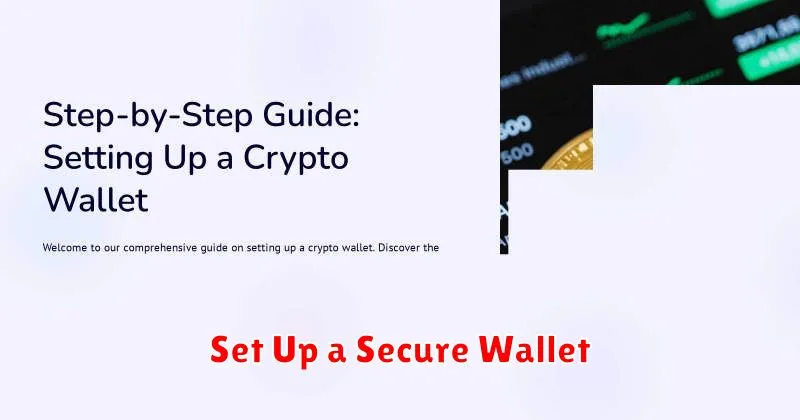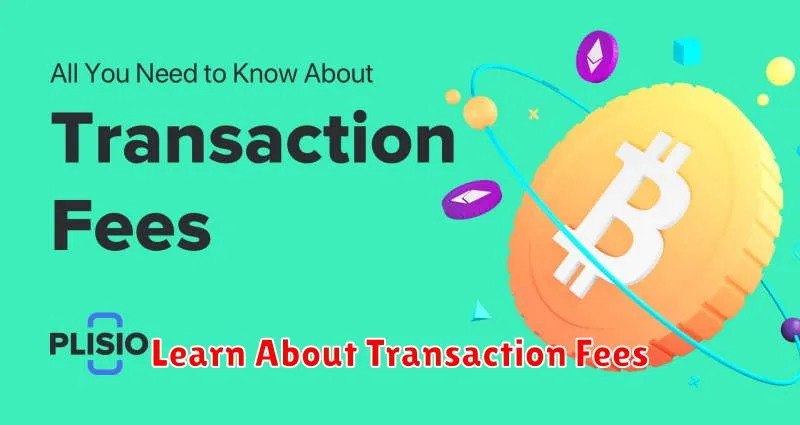Embark on your journey into the exciting world of cryptocurrency with this comprehensive beginner’s guide to buying your first cryptocurrency. This guide provides a clear, step-by-step walkthrough designed to demystify the process, covering everything from selecting a reputable crypto exchange and understanding cryptocurrency wallets to navigating the complexities of buying Bitcoin, Ethereum, and other popular digital assets. Learn about crucial security measures to protect your investments and gain a foundational understanding of crypto trading. Whether you’re a complete novice or simply curious about investing in cryptocurrency, this guide will equip you with the knowledge needed to make informed decisions and start your cryptocurrency investment journey confidently.
Choose a Reliable Exchange

Choosing a reliable cryptocurrency exchange is crucial for a smooth and secure first purchase. Consider these factors:
Security: Look for exchanges with robust security measures, including two-factor authentication (2FA), cold storage for a significant portion of their assets, and a proven track record of protecting user funds. Research any past security breaches or vulnerabilities.
Reputation and Regulation: Opt for established exchanges with a positive reputation among users. While complete regulation varies globally, consider exchanges that operate under some form of regulatory oversight in your jurisdiction. Check for transparency in their operations.
Fees: Compare trading fees, deposit fees, and withdrawal fees. These fees can significantly impact your overall costs. Be mindful of hidden fees.
User Experience: A user-friendly interface is essential, especially for beginners. Look for an exchange that is easy to navigate and provides clear instructions.
Supported Cryptocurrencies: Ensure the exchange supports the specific cryptocurrency you intend to purchase.
Customer Support: Reliable customer support is vital in case you encounter any issues. Check if they offer multiple support channels (e.g., email, phone, live chat).
By carefully evaluating these aspects, you can choose a safe and trustworthy exchange for your first cryptocurrency purchase.
Set Up a Secure Wallet

Before buying any cryptocurrency, securing a digital wallet is paramount. A cryptocurrency wallet is not a physical wallet; it’s software or hardware that stores your private keys, which are essential for accessing and managing your crypto holdings.
There are several types of wallets, each with varying levels of security and accessibility. Hardware wallets, like Ledger or Trezor, are considered the most secure option as they store your private keys offline, protecting them from online threats. They are, however, more expensive.
Software wallets, including desktop, mobile, and web wallets, offer convenience but require more caution. Choose reputable providers with strong security features and ensure your device is protected with strong passwords and up-to-date security software.
When choosing a wallet, consider the cryptocurrencies you plan to hold. Some wallets support a wide range of cryptocurrencies, while others are specific to one or a few.
Regardless of your choice, prioritize strong passwords, enable two-factor authentication (2FA) whenever possible, and regularly back up your wallet’s recovery phrase. This phrase allows you to restore your wallet if your device is lost or damaged. Losing this phrase means losing access to your cryptocurrency.
Remember to research thoroughly and select a wallet that best suits your needs and risk tolerance. The security of your cryptocurrency is your responsibility.
Learn About Transaction Fees

When buying cryptocurrency, you’ll encounter transaction fees, also known as gas fees (particularly on Ethereum). These fees compensate the miners or validators who process and confirm your transaction on the blockchain.
The amount you pay varies depending on several factors: the cryptocurrency you’re using, the network’s congestion (higher congestion means higher fees), and the speed at which you want your transaction to be processed (faster processing usually costs more).
Some exchanges or platforms might also add their own trading fees on top of network fees. It’s crucial to understand these fees upfront to accurately budget for your purchase. Always check the current fee estimates before confirming your transaction to avoid unexpected costs.
Transparency is key. Reputable exchanges clearly display all fees involved. Be wary of platforms that hide or obfuscate their fee structures.
Steps to Complete Your First Purchase

First, you need to choose a reputable cryptocurrency exchange. Research different platforms and compare fees and security features before selecting one.
Next, create an account on your chosen exchange. You’ll typically need to provide personal information and possibly verify your identity.
Then, you’ll need to fund your account. Most exchanges accept bank transfers, credit/debit cards, or other payment methods. The method and associated fees will vary depending on the exchange.
Once your account is funded, you can select the cryptocurrency you wish to purchase. Carefully review the current market price before proceeding.
Finally, place your order. Specify the amount of cryptocurrency you want to buy and confirm your purchase. After the transaction is processed, your cryptocurrency will be added to your exchange wallet.
Tips for Storing Your Cryptocurrency Safely

Securing your cryptocurrency is paramount. The most common and arguably safest method is using a hardware wallet. These physical devices store your private keys offline, protecting them from online threats like hacking and malware. Consider them like a high-security USB drive specifically for crypto.
Software wallets, while convenient due to their accessibility, present a higher risk. They are vulnerable to computer viruses and online attacks. If you choose this option, ensure you download from reputable sources and employ strong passwords and two-factor authentication (2FA).
Exchanges, while offering ease of buying and selling, should not be considered long-term storage solutions. Exchanges are vulnerable to hacking, and if the exchange is compromised, your funds could be at risk. Only keep the cryptocurrency you need for immediate trading on exchanges.
Regardless of your chosen storage method, always back up your private keys and recovery phrases securely. Losing access to your keys means losing your cryptocurrency. Store these backups offline and in multiple secure locations.
Finally, be wary of phishing scams. Never share your private keys or seed phrases with anyone, regardless of who they claim to be. Legitimate cryptocurrency companies will never ask for this information.
